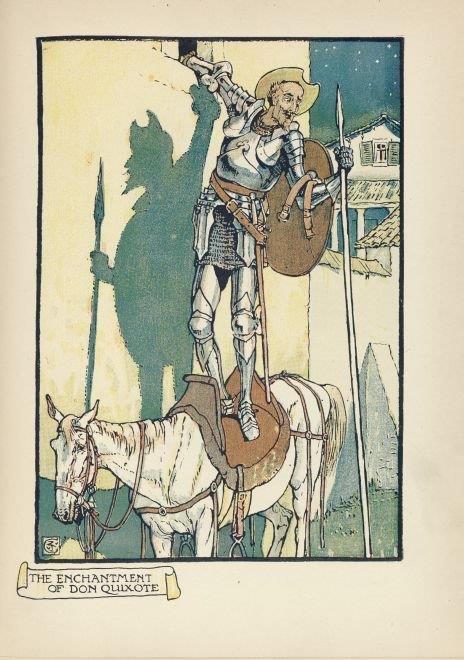Sept. 26, 2018
The timeless legacy of Don Quixote

Miguel de Cervantes is considered the father of the modern novel.
Wikimedia photo licensed under Wikimedia Commons
With his masterpiece Don Quixote (1605 and 1615) Miguel de Cervantes is generally considered to be the father of the modern novel. He’s often been referred to as the Spanish Shakespeare, though the comparison is, perhaps, unfair, and steeped in an Anglicized bias, as Cervantes’ works can stand alone, thank you very much.
Nevertheless, his literary importance is monumental and the University of Calgary will be a testament to that from Sept. 27 to 29, when more than 70 academics from Canada, Europe and the U.S. descend on the campus to give papers and discuss all things Cervantes for the 2018 North American Cervantes Society of America Conference.
In addition to the lectures — the bulk of which will be held in the Rosza Centre — the conference will also feature an exhibition dedicated to Cervantes in room 520 of the Taylor Family Digital Library (TFDL). The display includes 16th century Spanish coins from the Nickle Galleries collection as well as books and artifacts inspired by the novel, from Archives and Special Collections. On the third floor there will be a digital exhibition on the Spanish route of Don Quixote.
There will also be a free concert of 16th century music, performed by UCalgary musicians, and a lecture on Don Quixote’s armour by Peter Fuller, a Calgary resident and world-renowned armour maker.
Dr. Rachel Schmidt, PhD, a professor of Spanish literature in the Department of Classics and Religion is organizing the conference and she seems born for the job, her passion for the life and works of Cervantes — which included plays and poetry — quite contagious.
She points out the timeless influence of Don Quixote on a span of writers ranging from Mark Twain to Salman Rushdie and she notes that the novel, though a huge success, translated into English, French and Italian during Cervantes’ life, was also not respected as a work of serious literature at first. Rather, his tale of an aged, foolhardy knight errant adventuring through the rural Spanish region of La Mancha, was considered to be a silly, comedic novel written by an old man and failed writer with a checkered past (Cervantes had been a tax collector who served jail time for problems with his accounting).
Only after Cervantes’ death was Don Quixote better regarded as a brilliant social commentary on the futility of romantic idealism in a post-chivalric world, among its many interpretations.

Walter Crane's 1909 painting, The Enchantment of Don Quixote.
Image courtesy the Cervantes Project, Texas A&M University
“There are many elements of Don Quixote which still resonate today,” says Schmidt. “Cervantes creates an Arabic narrator and the story touches on the conflict between Christian Europe and the Islamic Mediterranean. During Cervantes’ lifetime, Spain was expelling its Islamic population and Cervantes himself had been a prisoner of the Ottoman Turks when he was a soldier. It’s a mystery why he wasn’t executed, as he was involved in organizing escape attempts. And yet, when Cervantes writes of this Islamic expulsion, he shows sympathy to the expelled people.
“This is, of course, very relevant today, this notion of the pluralistic society that turns on its ethnic and religious minorities.”
Schmidt also notes the relationship between Don Quixote and his sidekick, Sancho Panza, and its lasting influence on literature and pop culture.
“In so many ways Don Quixote and Sancho Panza are opposites,” says Schmidt. “Don Quixote is the tall, older man who lives in his idealized fantasy world. He is the boss. He is socially above Sancho Panza, who is short and round and full of this earthy peasant wisdom. Sancho Panza is Don Quixote’s servant, but he also keeps him somewhat grounded in reality.”
She adds: “Theirs is a pairing which we see reoccurring throughout literature and in pop culture. Think about the Lone Ranger and Tonto, Scully and Mulder, Sherlock Holmes and Watson. One is living in this idealized world and the other one is grounded in earthy reality.”
These topics and many more will be covered at the 2018 North American Cervantes Society of America Conference.
Find more information on the conference and the full program of lectures and events here.
They Might Be Giants: A Selection of Works Influenced by Cervantes’ Don Quixote runs until Oct. 31 in the Archives and Special Collections Foyer, room 520 in TFDL. The display is open to the public weekdays from 10 a.m. to 4:30 p.m.
